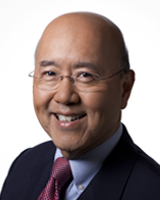FBI not disclosing how it unlocked San Bernardino shooter's iPhone


WASHINGTON (KGO) -- The FBI's discovery of a way to hack into the phone of one of the San Bernardino killers may not be the master key that allows prosecutors across the country to unlock iPhones in hundreds of more ordinary criminal cases.
Technology experts said it is not at all certain whether the technique can work with other types of iPhones.
RELATED: Tim Cook speaks about iPhone encryption battle with FBI
The FBI's announcement that it mysteriously hacked into an iPhone is a public setback for Apple Inc., as consumers learned that they can't keep the government out of even an encrypted device that U.S. officials had claimed was impossible to crack. Apple, meanwhile, remains in the dark about how to restore the security of its flagship product.
Apple software engineers and outside experts are puzzled about how the FBI broke the digital locks on the phone without Apple's help. It also complicated Apple's job repairing flaws that jeopardize its software.
It's logical that engineers and top executives at Apple want to know how someone the FBI hired was able to get by its built-in iPhone security. However, cybersecurity consultant Bob Zeidman doesn't think the FBI is going to cooperate. "Now, that the FBI knows it has a way of breaking into phones, Apple is unaware of it and I don't think they have an obligation. I don't think the FBI has an obligation to share it." he said.
RELATED: How the FBI cracked the iPhone encryption
Along with others, Cellebrite, which is based in Israel specializes in hacking into devices. Public records show Cellebrite has done so for the government for several years.
The job is often done with software. However, Stanford cybersecurity scholar Herb Lin speculates that hackers may have taken a different approach. "They could have opened it up and taken some of the chips out and taken a laser and removed some of the chip and read it. There's all sorts of complicated things to the hardware," he said.
Given the iPhone belonged to San Bernardino shooter Syed Rizwan Farook, Lin believes the White House will have, or may already have had, an internal meeting called the Vulnerability Equities Project that allows federal agencies to debate among themselves whether to share how to hack into secure smartphones in the interest of national security.
RELATED: Justice Department cracks shooter's iPhone; withdraws legal action
The process of breaking into a device can be highly technical, but it can also be the result of thinking differently. "It takes one person to say, 'oh, you know, there's this round-about way of doing it that you just haven't been thinking of,' and that's usually the way to get in. I's very unpredictable," Zeidman said.
The Justice Department's announcement that it was dropping a legal fight to compel Apple to help it access the phone also took away any obvious legal avenues Apple might have used to learn how the FBI did it. Magistrate Judge Sheri Pym on Tuesday vacated her Feb. 16 order, which compelled Apple to assist the FBI in hacking their phone.
The FBI is reviewing information from the iPhone, and it is unclear whether anything useful can be found.
Apple said that the legal case to force its cooperation "should never have been brought," and it promised to increase the security of its products. CEO Tim Cook has said the Cupertino-based company is constantly trying to improve security for its users.
Click here for more stories about Apple.
The Associated Press contributed to this story.









